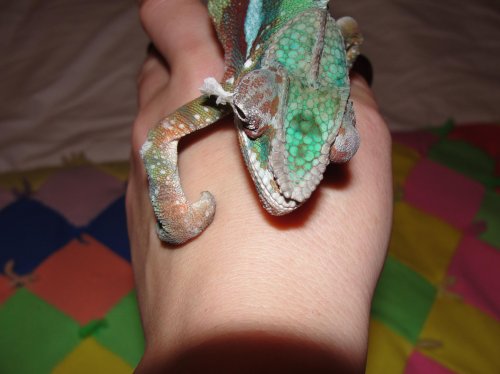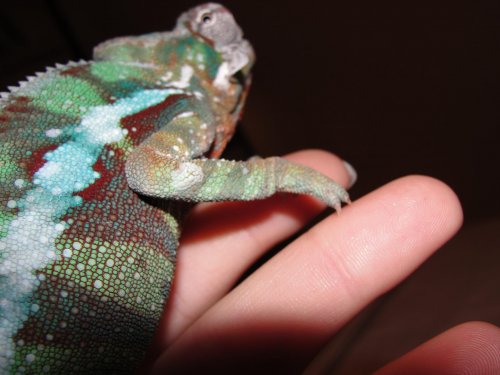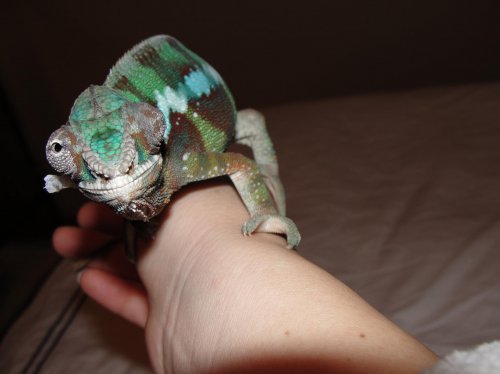chamel1
New Member
Today I took my cham out of his cage and when he was crawling around i noticed he was not grabbing with his front hands the one is better then the other but not normal.. Instead of how they reach for things he almost drags his wrist like it is limp. Soon as i noticed this i put him back in his cage so i didnt hurt him more. I watched him for a while in his cage and both hands/wrists are the same way. He can hold on to things once he gets a hold of them but he is having a hard time moving this wrist to grab something. I have been researching MBD and from the stuff I have read this doesnt look like that because it is not in between the elbow and wrist. I feed them every other day and always spray the crickets with a food spray- Calcium Supplement one you get from petco it says it prevents MBD. Can anyone shed some light on this issue wether you may have seen or heard of it before. I will leave him alone and monitor his eatting a drinking to see if he is effected. Any help or advise. Thanks







